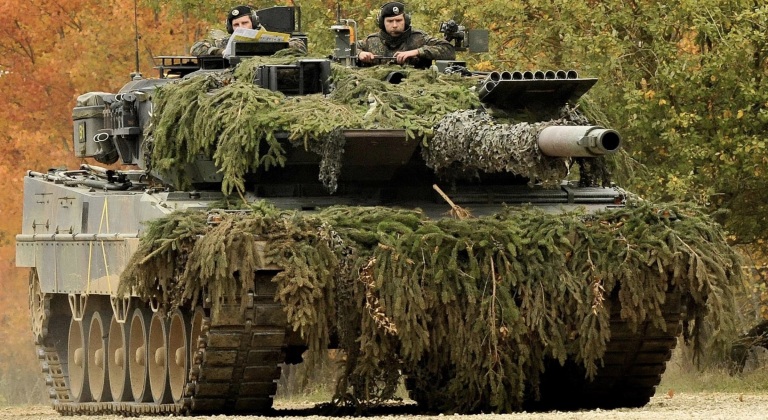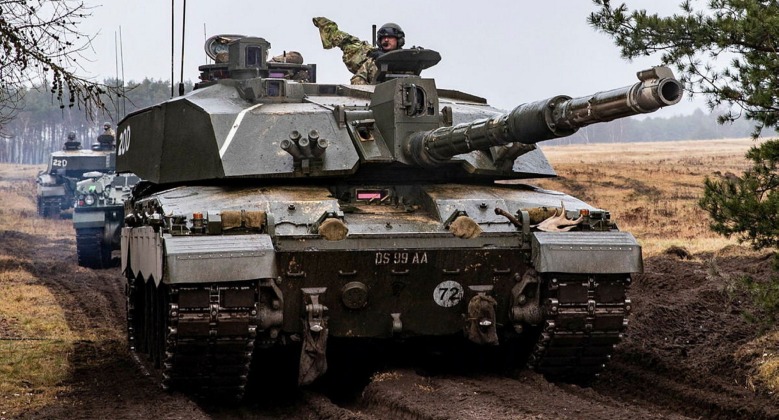News
British Ret. Marshal Warns NATO Tanks Impractical to Arm Ukraine: How Viable is the New Challenger 2 Aid Package?
Following reports that Britain is set to announce the transfer of Challenger 2 tanks to Ukraine, which would mark the first ever provision of post-1960s NATO tanks to the Eastern European country, British Royal Air Force Air Vice Marshal Ret. Sean Bell on January 11 joined several experts in criticising the move. Bell highlighted that although he considered the Challenger 2 to be an effective vehicle, the complicated and very lengthy training required to operate the tank meant transfers were unlikely to be practical. “They’re packed full of electronics, laser sighting, night vision goggles, targeting computers, all of which will be double Dutch to the Ukrainians and would take a great in of training… So I think it’s still speculation. It’s very difficult to see how the Ukrainians would benefit from these today but they may end up being part of the whole dichotomy here,” he stated in an interview with Sky News. His statement follows similar assessments of other complex NATO weapons systems which are set to be sent to Ukraine, most notably American Patriot missile batteries which, although scheduled for delivery in 2023, were reported by the U.S. Congressional Research Service to require at least until 2024 to train Ukrainian crews on.

Marshal Ret. Bell highlighted that Ukraine would be better served by transfers of Soviet designed armour, noting that such vehicles could be easily integrated without significant extra training and with compatibility of spare parts with the tanks in Ukraine’s existing inventory. Although this point has been raised repeatedly, NATO has largely depleted its stocks of such tanks arming Ukraine since the outbreak of the Russian-Ukrainian War in February 2022, with T-72s from Poland, Slovakia and other former Warsaw Pact states being sent in significant numbers. Older T-55 tanks from Slovenia have also been dispatched despite being largely obsolete and using a different gun calibre to the T-72 and T-64 which Ukraine relies on. Some sources have concluded that the best hope of providing more tanks for Ukraine could come from beyond Europe, in particular from Morocco which has several hundred T-72s in its inventories and has been receptive to the possibility of selling them with Ukraine as the end customer. A major further issue with supplying Western designed tanks is that their losses in combat could seriously undermine their international reputations, with the German Leopard 2 in particular which several NATO members have shown a willingness to donate having performed very poorly in Turkish hands in operations in both Syria and Iraq against lightly armed insurgents. The heavy losses suffered led Turkish officers to describe their personnels’ experience as “trauma.”

The Challenger 2 is a significantly newer design than the Leopard 2, having entered service almost 20 years later, and has a number of important advantages in terms of survivability. Its rifled main gun is considered obsolete, however, and lacks compatibility with several key 21st century munition types, with the Leopard 2 and all post-1963 Soviet tanks using rifled guns. The Challenger 2 has not faced high intensity combat in the past, largely due to its lack of exports and to the limited capabilities of insurgents in Iraq which it faced in several limited engagements in the 2000s. The possibility of Russian forces taking a heavy toll on Challenger 2 units, however, would arguably be less serious than if the same were achieved against the Leopard 2 or the American M1 Abrams, since the British tank is no longer in production and is not widely used meaning there would be no export prospects which the tank’s destruction may serve to hinder. The issue of time consuming training delaying deliveries could potentially be resolved by having foreign contractors operate the tanks, with such personnel from across the Western world having played a fast growing role in the war effort. Another possibility is that the tanks will be delivered to Ukraine in the near term, but be used solely for training in deployments far from the frontlines in the eastern Donbas regions.

The Challenger 2 is notably the only NATO tank to have seen significant combat without ever taking losses. It is also the only Western tank class to have entered service since the end of the Cold War, joining the British Army in 1998 and seeing limited sales to Oman soon afterwards. Of the approximately 450 produced, close to 150 are thought to be in storage which would leave them free to be delivered to Ukraine. Numbers in storage are expected to increase by approximately 70 tanks over the next five years as the British Army’s frontline armour is cut down to under 150, meaning donation of approximately 200 tanks to Ukraine remains a significant possibility. The difficulties integrating Challenger 2s into the Ukrainian Army, and the dangers that could result from the tanks being captured or otherwise compromised, means that there is a significant possibility the tanks will be kept far from the frontlines and used primarily to help Ukrainian forces begin adjusting to NATO armour. Sending the tanks to Ukraine has been widely supported in Britain, with chairman of the House of Commons Defence Committee Tobias Ellwood issuing a statement, closely coinciding with Bell’s, that London should “absolutely” supply the vehicles. This was followed by confirmation on January 14 by Prime Minister Rishi Sunak that the tanks would be dispatched. Supplies could potentially make Ukraine the largest Challenger 2 operator, while familiarity with the design could also significantly influence Ukrainian armoured warfare tactics and led to its means of operations more closely mirroring those of its Western allies.












